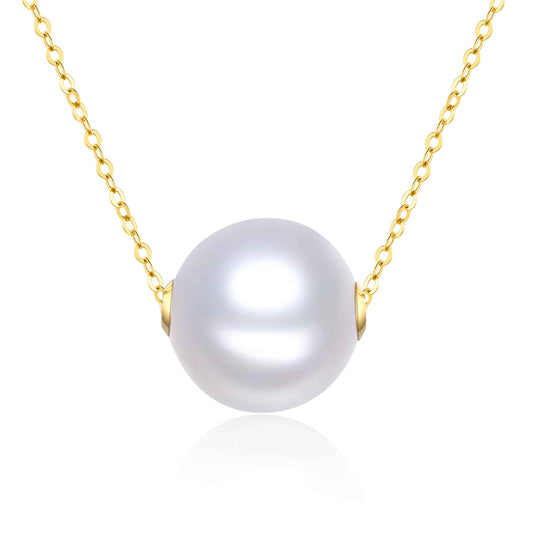
Vivien Leigh: The Pearl of Beautiful Determination
Share
She Triumphed Over Critics and Her Mental Illness
She rose above the prejudice of her acting abilities due to her beauty, and the struggle with mental illness. Like grit polishes a pearl to perfection, her determination to earn respect gifted us legendary film roles. This is another installment of the Living like a Pearl series. Find the other stories here.
________
Considered to be one of the most beautiful actresses of her day, she played "as many different parts as possible" in an attempt to learn her craft and to dispel prejudice about her abilities. Her husband, Laurence Olivier, would tell critics they should "give her credit for being an actress and not go on forever letting their judgments be distorted by her great beauty."
Vivian Mary Hartley was born in Darjeeling, British India on November 5, 1913. An only child, Vivien spent her early years living in the Indian town of Ootacamund. Her parents instilled in her an appreciation for literature and at age three, she made her first stage appearance reciting “Little Bo Peep” in her mother’s amateur theatre group.
Her childhood was privileged with private education in London, France, and Italy. Upon seeing the film ‘A Connecticut Yankee’ in London’s West End in 1931, Vivien’s ambition to become an actress was sparked. She enrolled in the Royal Academy of Dramatic Art in London at 18, but this was also when she met her first husband, Herbert Leigh Holman. Although he was 13 years older with no appreciation of “theatrical people”, she ended her studies and was married in December 1932. Less than a year later, at age 19 they welcomed their daughter Suzanne.
With the help of a nanny, she pursued acting while a young mother, and in 1935 her film debut was a small role as a schoolgirl in ‘Things Are Looking up’. Upon the suggestion of her agent to adopt a stage name, she replaced her last name with Leigh, and the spelling of her first name to Vivien, and ‘Vivien Leigh’ was born. Cast in the play ‘The Mask of Virtue’ that same year, she garnered excellent reviews, with recognition of what would become her trademark characteristic of rapid changes in mood, described as “a lightning change came over her face.”
It was her role in the 1937 film ‘Fire Over England’ that would transform her life. Starting an affair with her married co-star Laurence Olivier, the movie would be hailed as the first pairing of what would become their legendary 20-year working marriage in multiple stage productions and films together. After they each were divorced, Vivien and Laurence were married on August 31, 1940.
Having read the novel ‘Gone with the Wind’ and aware of the upcoming film production, Vivien worked hard to win the role. Certain she was destined to play Scarlett, she told a journalist, "I've cast myself as Scarlett O'Hara". Her infamous portrayal in the 1939 film would catapult her to stardom as the first British actress to receive an Academy Award, and a legendary status that would associate her with the role.
A film critic wrote in The New York Times, "Miss Leigh's Scarlett has vindicated the absurd talent quest that indirectly turned her up. She is so perfectly designed for the part by art and nature that any other actress in the role would be inconceivable."
Suffering from tuberculosis in 1944, and a miscarriage while filming ‘Caesar and Cleopatra’ in 1945, Vivien struggled with depression, and what would be recognized as bipolar disorder episodes. With determination, she continued the work she loved.
Her second Academy Award was yet to come with her role as Blanche DuBois in ‘A Streetcar Named Desire’. After 326 performances over nine months in the character of Blanche DuBois in the London West End stage production, she reprised the role in the 1951 film adaptation with Marlon Brando. Directed by her husband Laurence, it would earn her critical acclaim.
Director Elia Kazan was quoted to have become "full of admiration" for "the greatest determination to excel of any actress I've known. She'd have crawled over broken glass if she thought it would help her performance."
Vivien and Laurence divorced in 1960. She had remained close friends with her first husband, who spent considerable time with her. Vivien’s desire to continue working was often frustrated by declining mental health, but periods of stability allowed her to perform in theatre productions, and in 1963 she won a Tony Award for Best Actress in a Musical for her role in ‘Tovarich’.
After a 30-year career playing heroines, in comedies and classic Shakespearean characters, her last role in the 1965 film ‘Ship of Fools’ was lauded as a triumph, as her struggle with mental illness was apparent. Later reflecting on Vivien’s performance, producer and director Stanley Kramer recalled her determination in taking the challenging role, "She was ill, and the courage to go ahead, the courage to make the film—was almost unbelievable."
Tuberculosis resurfaced in 1967, which claimed her life at 53 years old on July 8, leaving heartbroken fans, her ex-husbands, daughter, and three grandsons. The lights of every theatre in central London were extinguished for an hour in tribute to the courageous and beautiful pearl.



